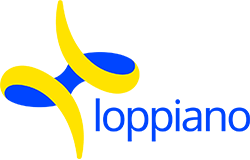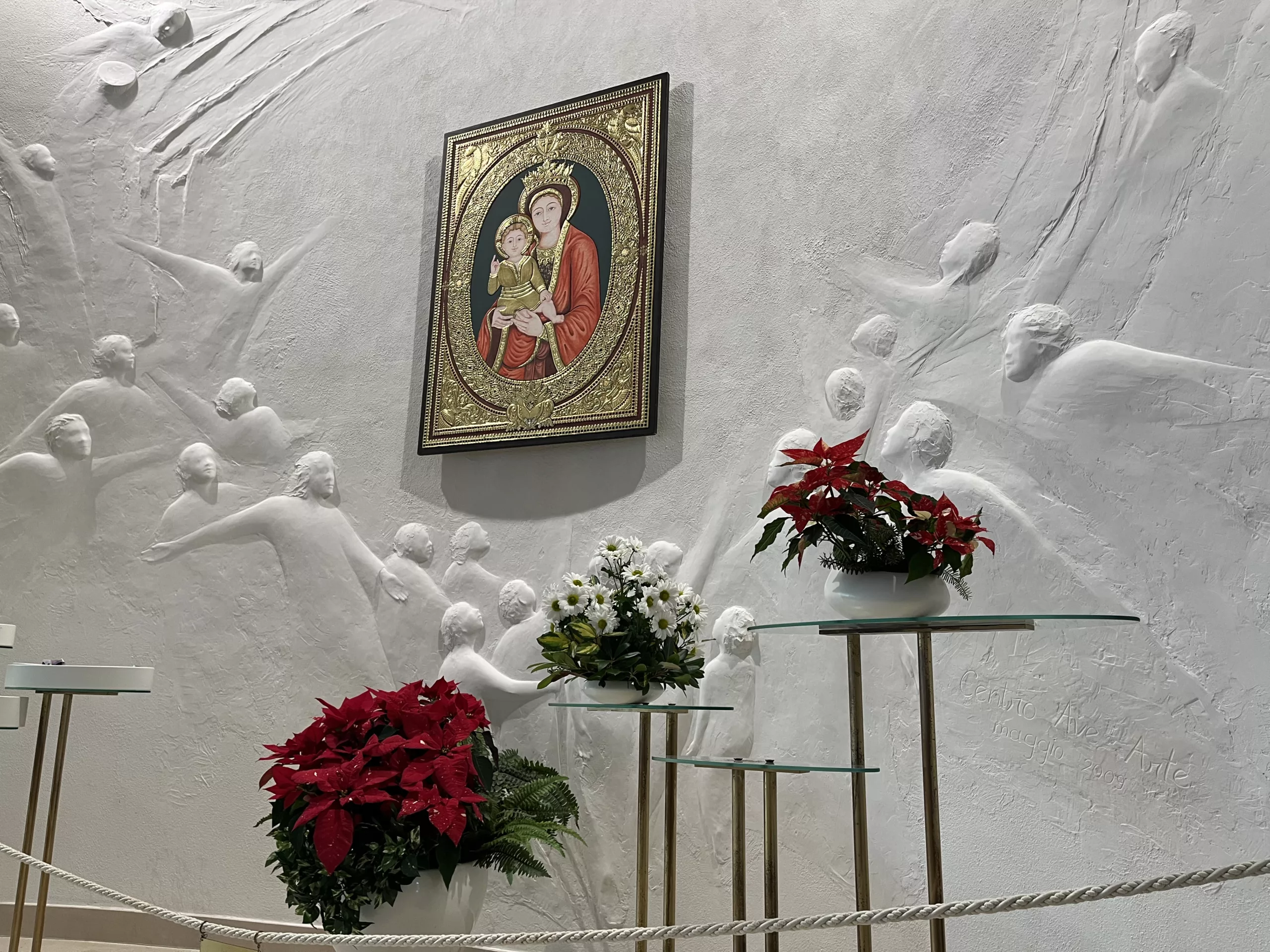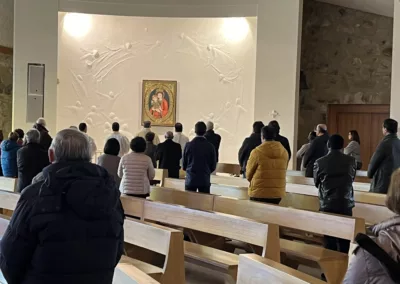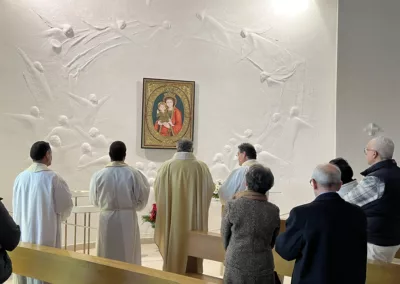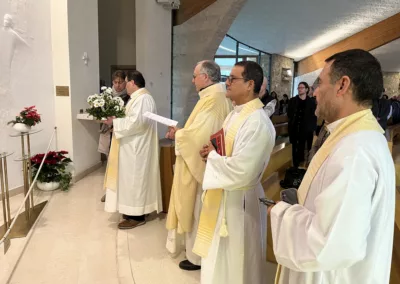In the Mass on January 1st, the residents of Loppiano and the guests prayed to Mary for peace throughout all bloodstained lands. A floral tribute and the gift from the Sisters of Santa Maria degli Angeli near Assisi were offered. “The Mother with the Child signifies a new creation,” said Pope Francis in his homily at St. Peter’s.
A floral tribute is carried in procession by the celebrating priests and placed beneath the icon of Mary Theotokos (Mother of God), a painting by an Indian artist of Hindu faith, blessed by Saint John Paul II. The celebration of the Mass on January 1st in Loppiano has just concluded. “Bless all of us, O Holy Mother, because we are faithful to the Gospel of your Son, attentive to the inner voice of the Spirit, true children of God in fraternal love and in the hope of eternal life,” concludes Fr. Giampietro Baldo, the main celebrant, reading a prayer written by Bishop Mario Meini, emeritus of Fiesole. Among the offerings, a special symbol has been brought to the altar during the offertory. It is a fragment of the Porziuncola chapel, located inside the Basilica of Santa Maria degli Angeli, near Assisi. The fragment was donated by the Sisters of Santa Maria degli Angeli
The first day of the year is dedicated by the Catholic Church to Mary under the title of “Mother of God.” This truth of faith (dogma) was defined on October 11, 431, during the Council of Ephesus. During that assembly, the human and divine nature of the unique person of the Word in Jesus Christ was affirmed, and consequently, the divine motherhood of Mary was declared. It is a solemn feast in the citadel, whose sanctuary is connected by a special bond of affinity with the Basilica of Santa Maria Maggiore in Rome, the first temple in the West dedicated to the Mother of God.
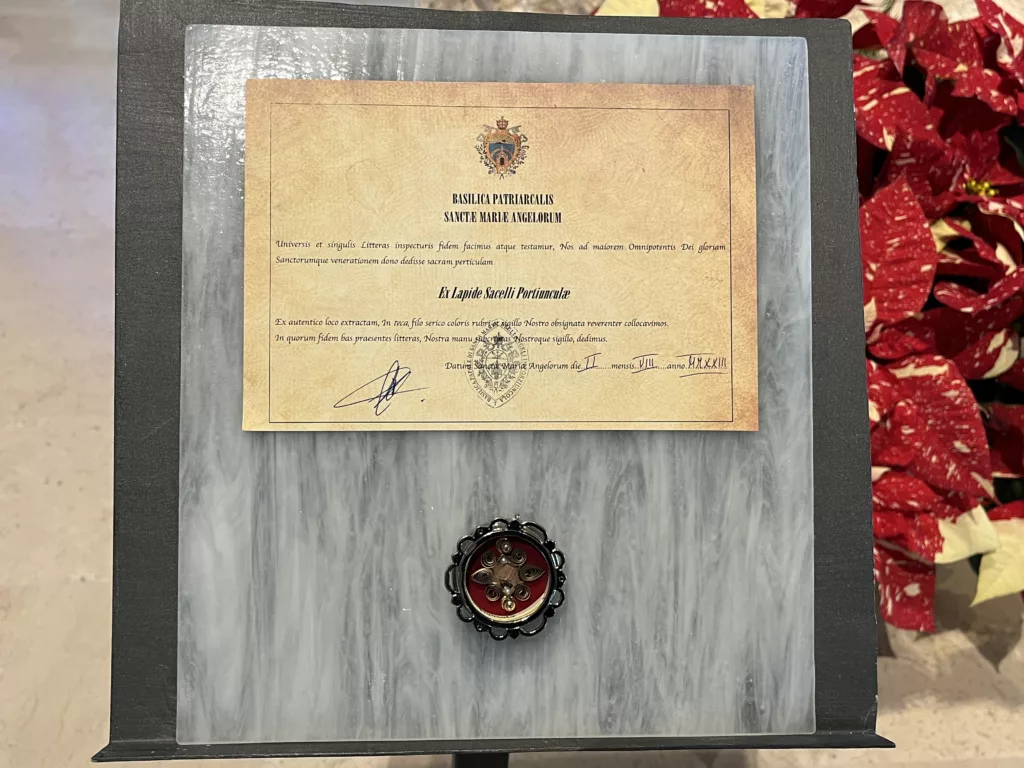
“Pope Francis highlighted during the homily of the Mass on January 1, 2024, ‘The Mother with the Child signifies a new creation. At the beginning of the time of salvation, there is, therefore, the Holy Mother of God.’ The pontiff continued, ‘The words “Mother of God” express, in fact – the joyful certainty that the Lord, a tender Child in His mother’s arms, has forever united Himself to our humanity, to the point that it is no longer ours alone but His.‘ So much so, he said, ‘Mother of God: a few words to confess the eternal covenant of the Lord with us. Mother of God: it is a dogma of faith, but it is also a “dogma of hope”: God in man and man in God, forever.'”
Pope Francis emphasized that “welcoming the Mother into one’s life is not a choice of devotion but a requirement of faith: ‘If we want to be Christians, we must be Marian’ (Pope Paul VI, Homily in Cagliari, April 24, 1970), that is, children of Mary.” He further stated, “The Church needs Mary to rediscover its feminine identity: to resemble her more, who, as a woman, Virgin, and Mother, represents its perfect model and figure; to make room for women and be generative through pastoral care characterized by nurturing concern, patience, and maternal courage. But the world also needs to look to mothers and women to find peace, to break free from the spirals of violence and hatred, and to return to having human perspectives and hearts that see.”
Finally, “Our times, lacking in peace, need a Mother to reunite the human family. Let us look to Mary to become builders of unity, and let us do so with her creativity as a Mother, who cares for her children: she gathers them and consoles them, listens to their sorrows and dries their tears.” He concludes with a wish for 2024: “May this year be filled with the maternal tenderness of Mary, the Holy Mother of God.”
